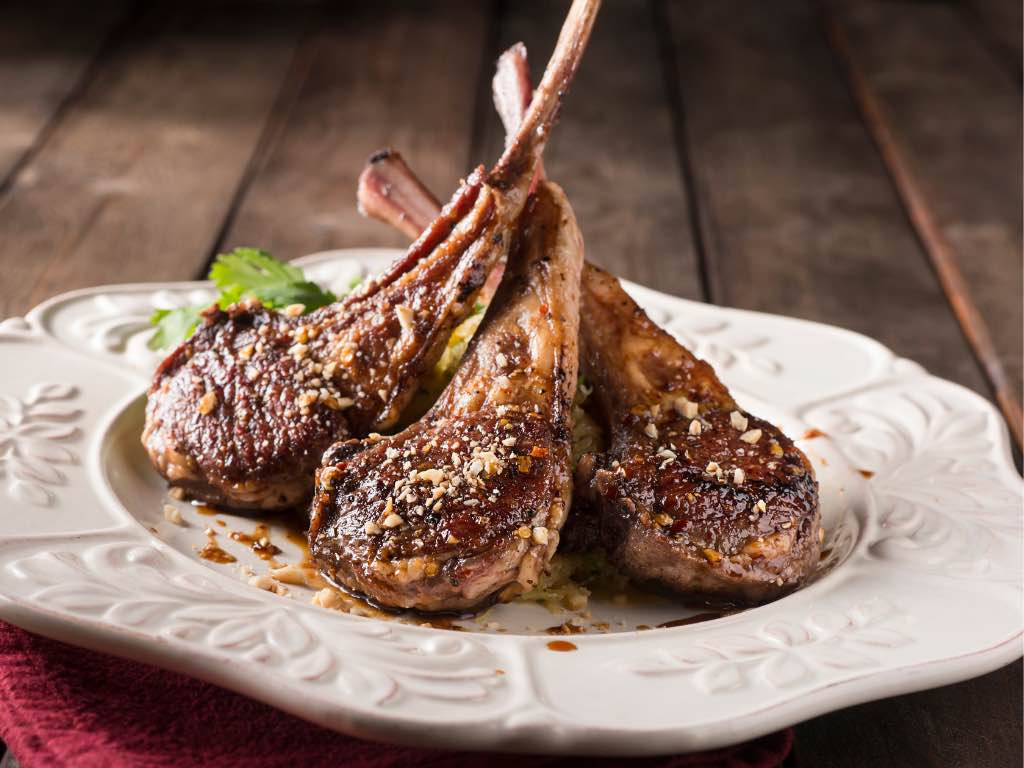
Savor the Flavor: A Step-by-Step Guide on How to Cook Lamb Ribs
|
|
Time to read 7 min
Welcome to One Stop Halal!
Written by: Samir P.
|
|
Time to read 7 min
When it comes to indulgent meats that can genuinely make your taste buds dance with delight, lamb ribs are a top contender. With their tender meat and rich flavor, lamb ribs are a culinary delight that can elevate any meal. Whether you're a seasoned chef or a beginner in the kitchen, this step-by-step guide will walk you through How to Cook Lamb Ribs to perfection. So, let's roll up our sleeves and journey to savor the flavor of perfectly cooked lamb ribs.
Choosing the right lamb ribs is crucial to preparing a delicious and satisfying meal. Lamb ribs come in different cuts, each with its characteristics, and making the right choice depends on your preferences and cooking method. Here, we'll discuss the two primary cuts of lamb ribs: baby back ribs and spare ribs.
Baby back ribs are the two main cuts' smaller, more tender, and leaner. They are cut from the top of the lamb ribcage, closer to the backbone. Here are some key features of baby back ribs:
When choosing between baby back ribs and spare ribs, consider your cooking preferences and desired flavor profile. Opt for baby back ribs if you prefer a leaner, milder flavor and shorter cooking time. On the other hand, spare ribs are the way to go if you crave a meatier, richer flavor with a longer cooking process.
Ultimately, choosing between baby back ribs and spare ribs is a personal preference. Both cuts can yield delicious results when cooked with care and the right technique. So, whether you're planning a backyard barbecue or a cozy indoor meal, understanding the differences between these lamb rib cuts will help you make the perfect choice to suit your culinary needs.
You'll need high-quality ingredients and essential equipment to create mouthwatering lamb ribs how to cook. Here's a breakdown of what you'll need:
By assembling these key ingredients and equipment, you'll be well-prepared to embark on your culinary journey to create delectable lamb ribs. Remember that the quality of your ingredients and the attention to detail in your cooking technique will play a significant role in your lamb ribs' final taste and texture. Enjoy the process and savor the flavor!
Now comes the fun part: choosing your preferred cooking method. There are three popular options for how to cook lamb ribs: grilling, smoking, and oven-roasting. We'll explore each process.
Welcome to the Home of the Halal Lamb. We carry various lamb cuts that are hard to find elsewhere. We deliver to your doorstep anywhere in the United States within 1-2 business days.
How to cook lamb ribs to perfection doesn't have to be intimidating. With the right cut, proper seasoning, and the cooking method that suits your taste, you can savor the flavor of tender, mouthwatering lamb ribs. Whether you grill, smoke, or oven-roast, patience and attention to detail are essential. Now, gather your ingredients, fire up your grill or smoker, and embark on a culinary adventure that will have your taste buds singing with delight. Enjoy every bite of your perfectly cooked lamb ribs! We are sorry to hear about your inconvenience. There is a sign outside the building which says pickup area. And there is a doorbell to press for an attendant to come and help you serve.

© 2025 One Stop Halal, Inc.